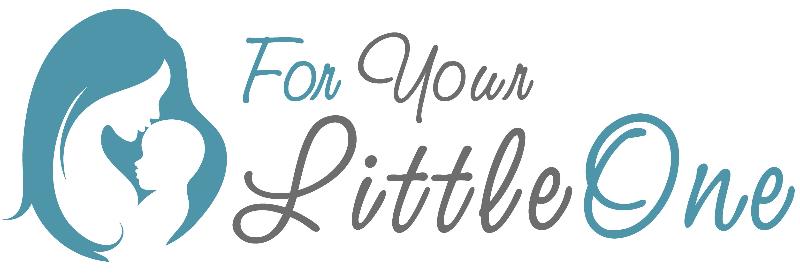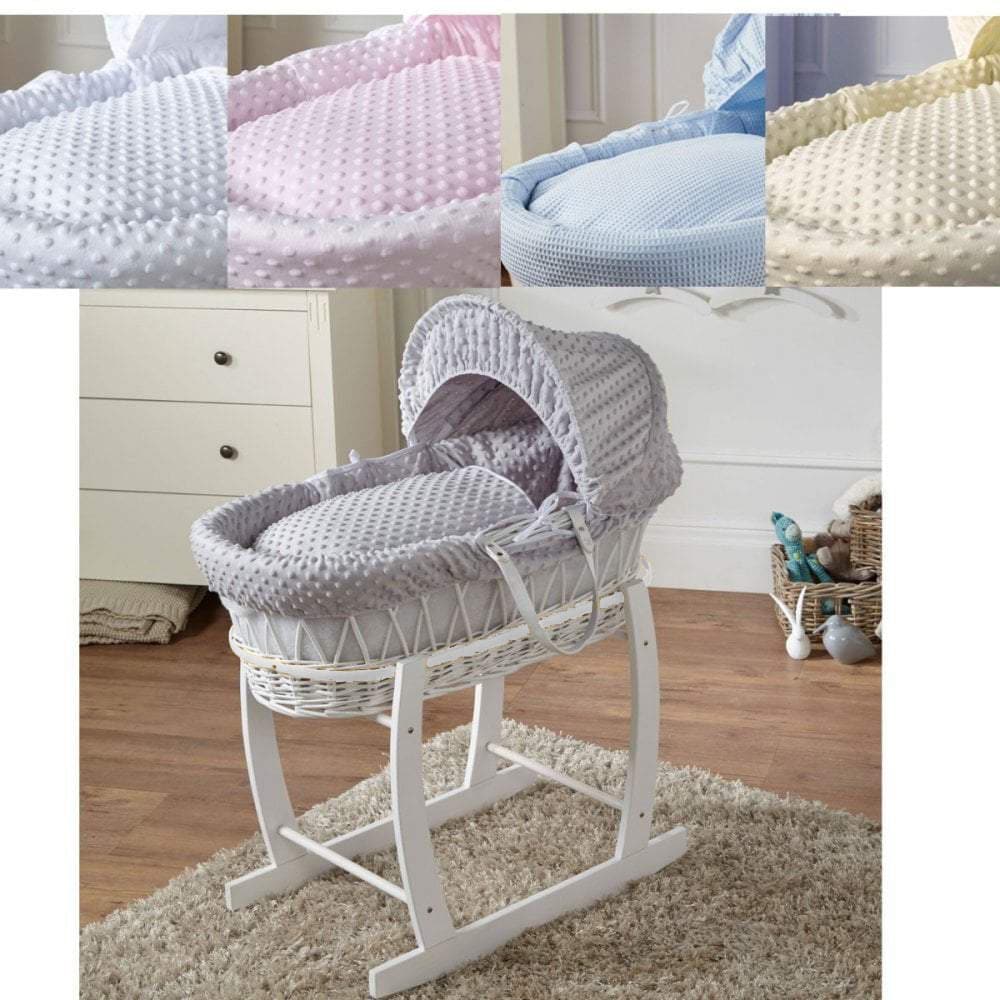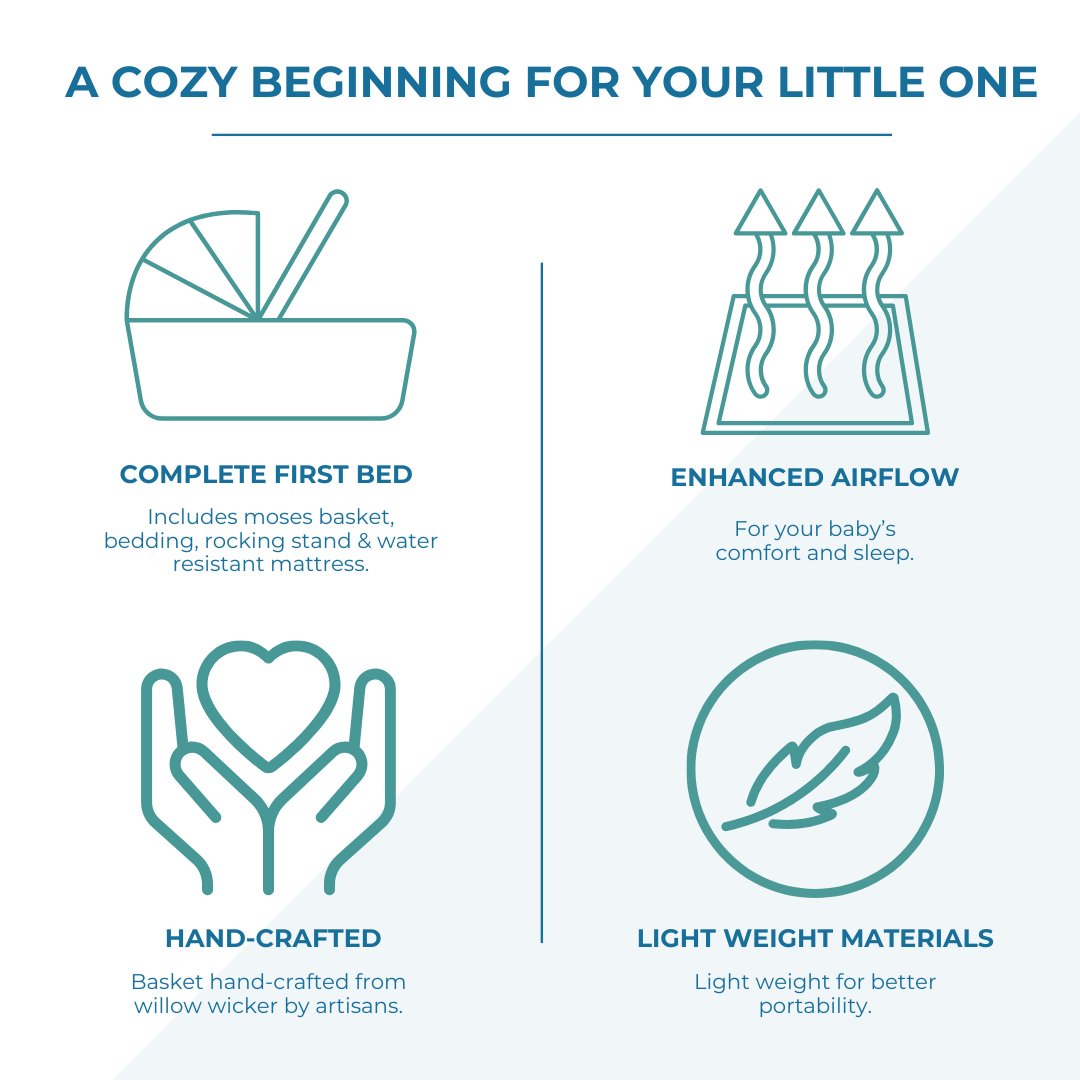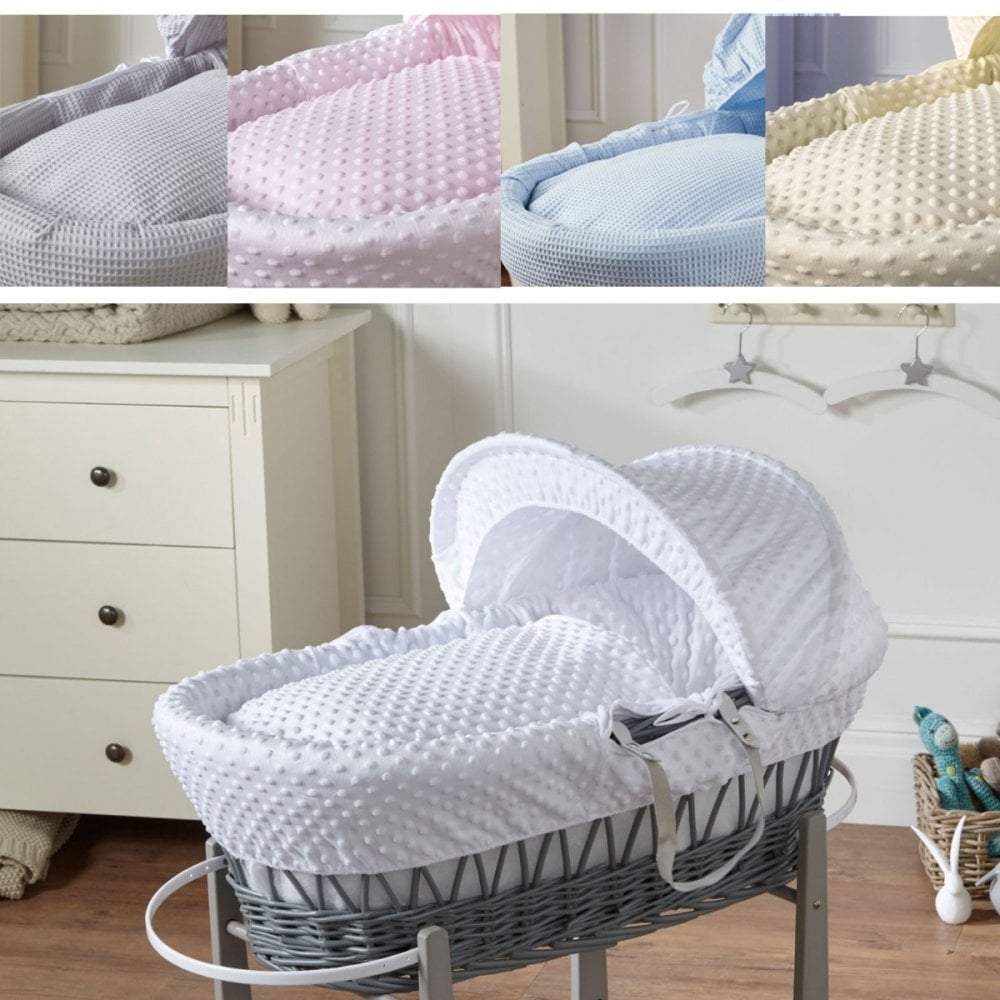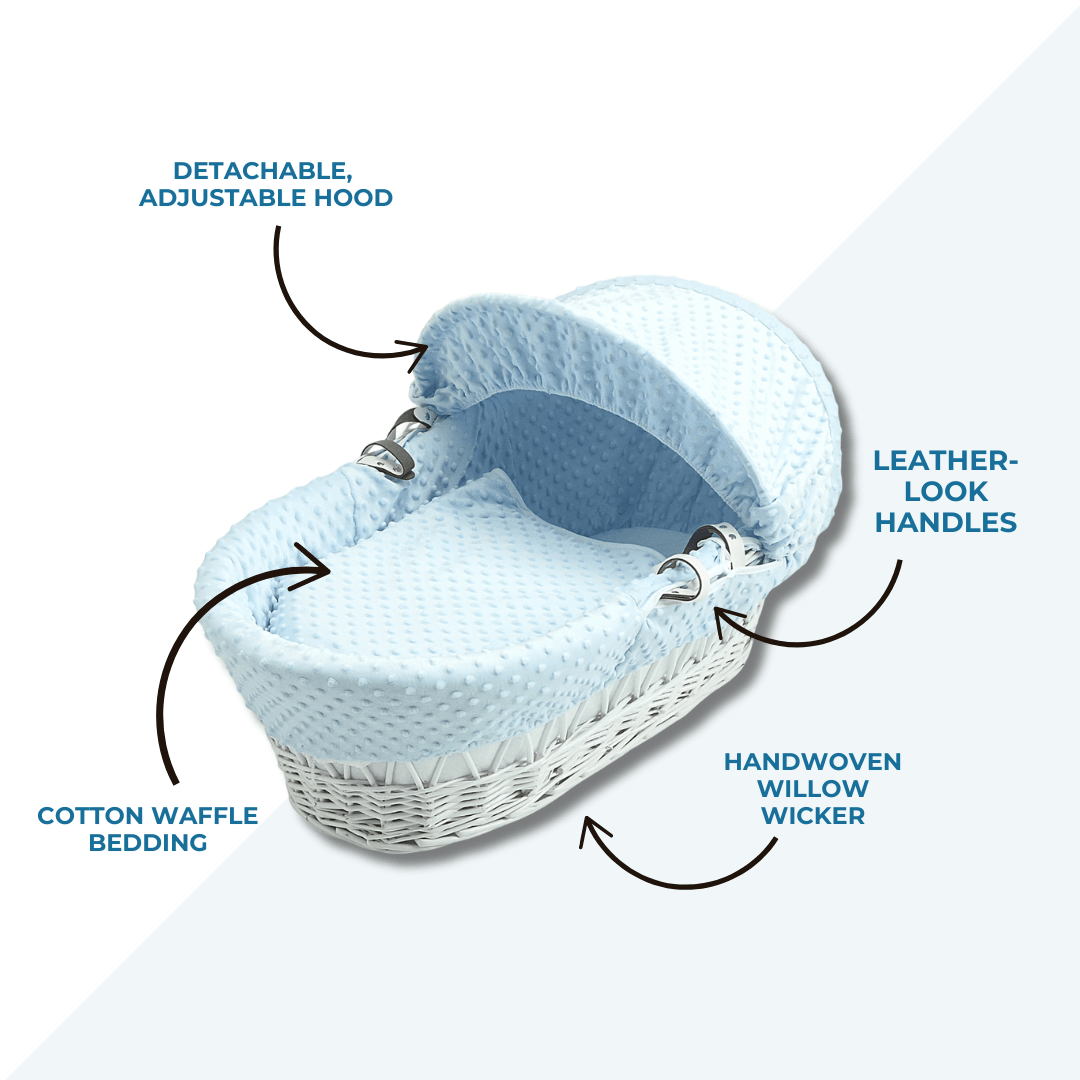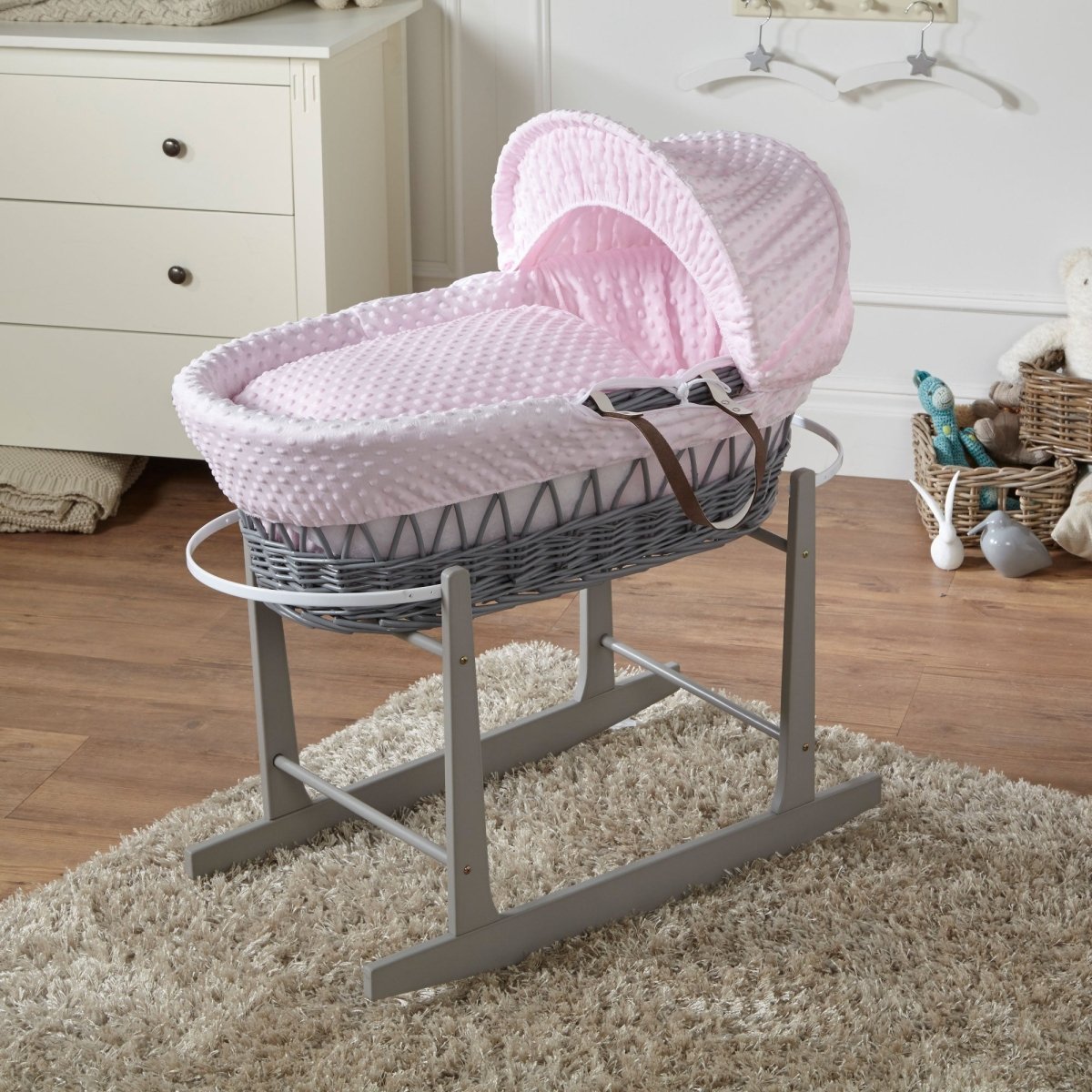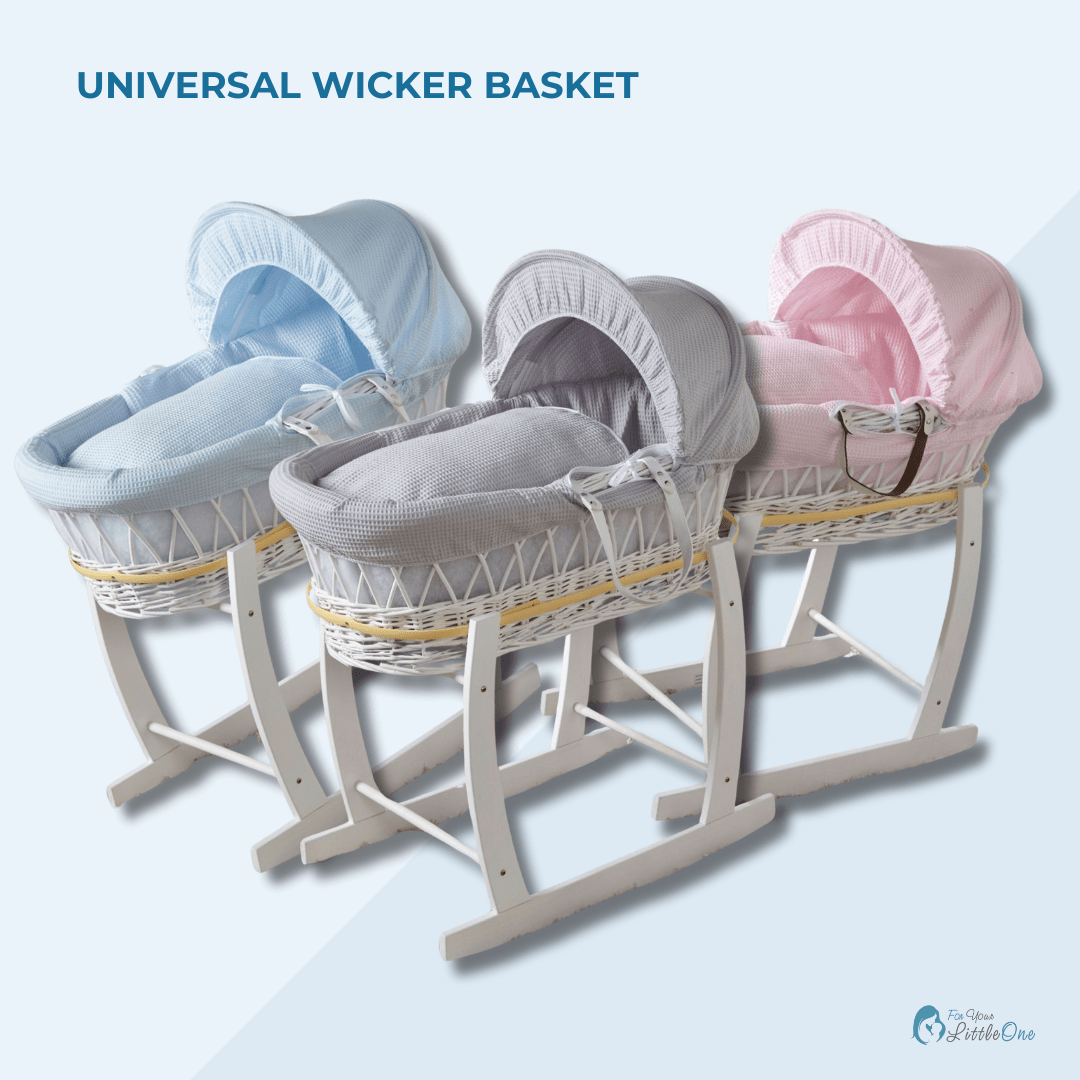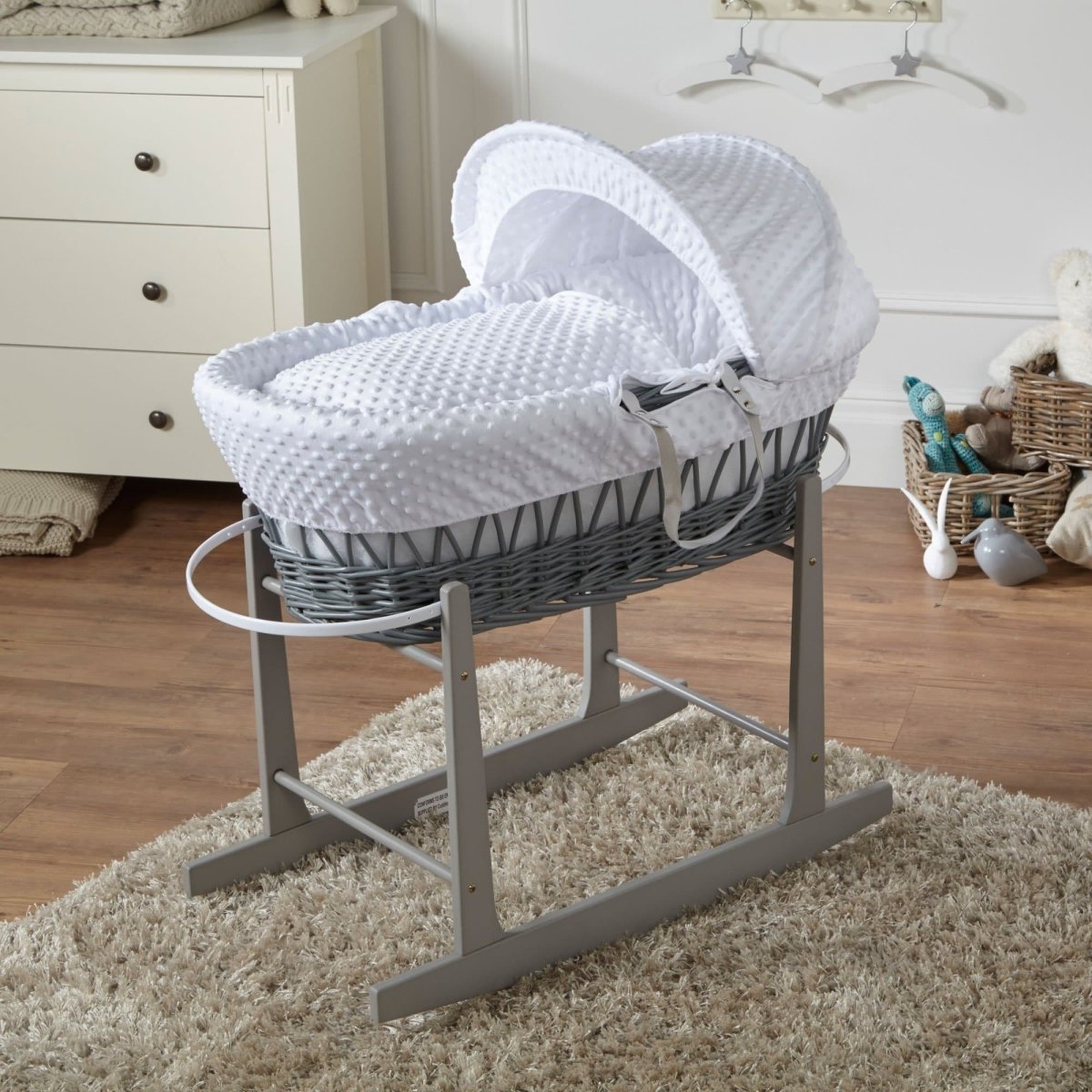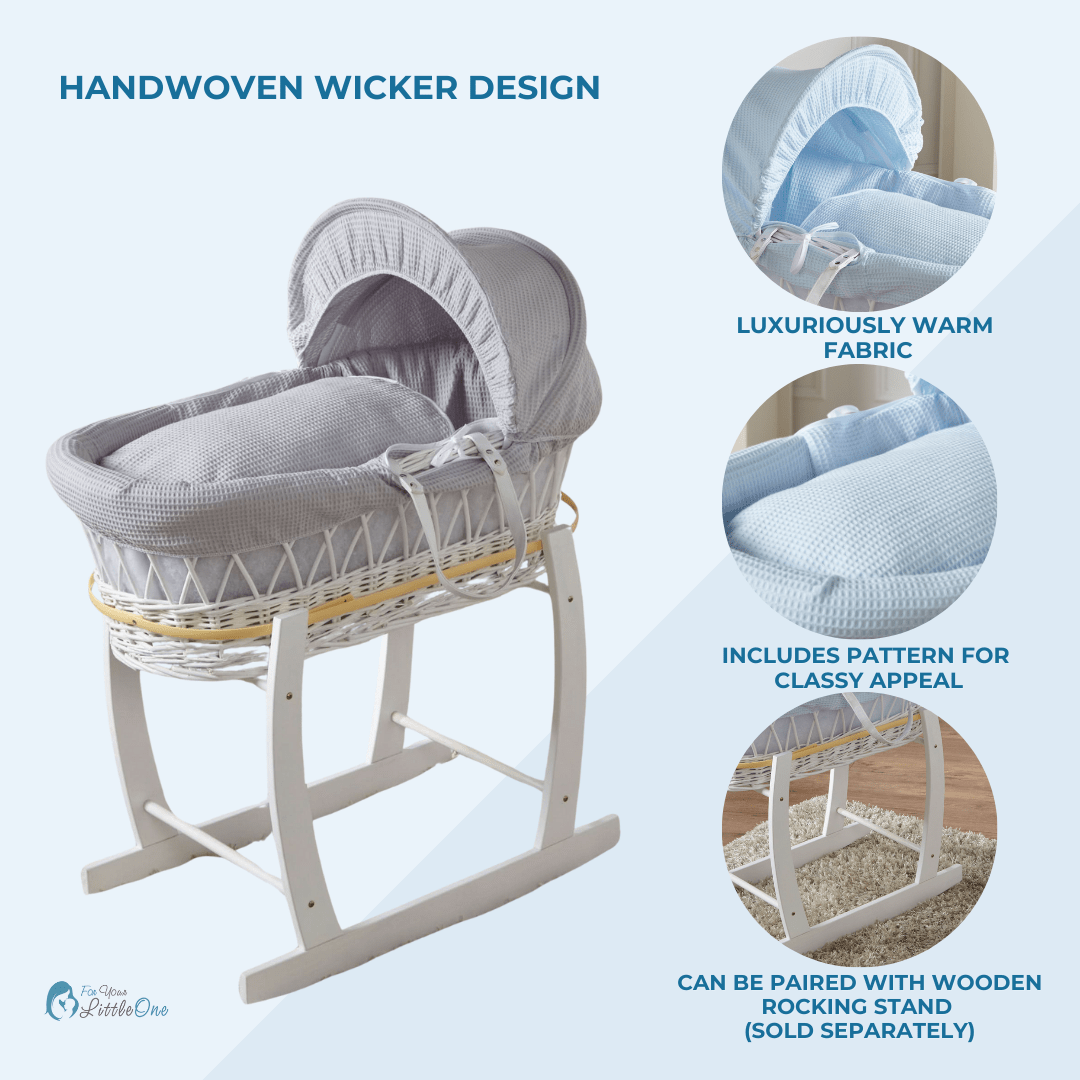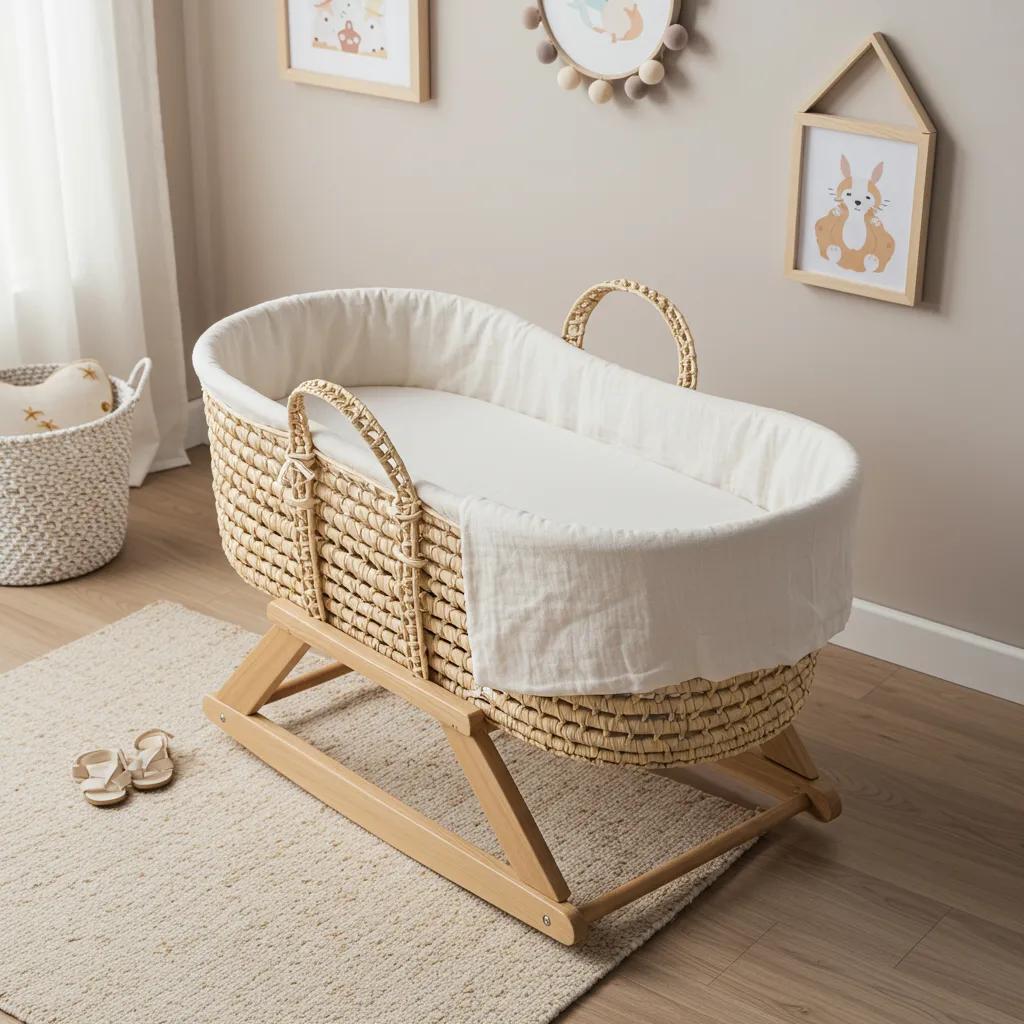Moses Basket Safety Guidelines You Must Know for Safe Newborn Sleep
Each year, safe sleep practices protect thousands of newborns by reducing Sudden Infant Death Syndrome risk. Ensuring proper Moses basket use is vital for parents who want both comfort and security for their baby. In this guide on Moses basket safety guidelines, you’ll learn how to position your baby, select the right mattress, maintain a clear sleep space, regulate room temperature, and meet UK standards. We’ll also explore criteria for choosing a sturdy basket and the right moment to transition into a cot. With For Your Little One’s range of BS EN 1466:2014-compliant baskets, mattresses, and stands, you can shop confidently for quality products that support safe, restful sleep.
What Are the Essential Safety Guidelines for Using a Moses Basket?
Understanding foundational practices ensures every newborn sleeps securely in a Moses basket. These core guidelines reduce entrapment, suffocation, and journey-related hazards while promoting healthy breathing.
Why Should Babies Always Sleep on Their Back in a Moses Basket?
Placing newborns on their back in a Moses basket significantly reduces SIDS risk because it keeps airways open and supports unobstructed breathing. This supine position aligns the head with the torso, preventing airway collapse and improving oxygen flow throughout sleep.
How to Choose a Firm, Flat, and Well-Fitting Moses Basket Mattress?

A firm, flat mattress that fits snugly into the basket eliminates gaps where small limbs could become trapped. High-density foam or fibre mattresses from For Your Little One meet these criteria, providing stable support that prevents sinking and maintains an even surface.
What Items Should Be Avoided to Keep the Moses Basket Sleep Space Clear?
Avoid loose bedding, bumpers, quilts, pillows, and soft toys to eliminate suffocation hazards. Only use a tight-fitting sheet on the mattress. A completely clear sleep space minimises the risk of objects shifting over your baby’s face during movement.
How Does Maintaining the Right Room Temperature Reduce Risks?
Maintaining a nursery temperature between 16 °C and 20 °C prevents overheating, which is linked to increased SIDS risk. Use a reliable room thermometer and dress your baby in a light sleepsuit rather than heavy blankets to regulate body heat safely.
Why Must You Never Carry a Moses Basket with Your Baby Inside?
Carrying a loaded basket can lead to sudden shifts, tipping, or accidental drops that cause injury. Always remove your baby before moving the basket and place them in a secure seat or on a stable surface to minimise fall risk.
How to Position a Moses Basket on a Stable Surface?
Set your Moses basket on a flat, firm stand or low-level surface away from edges, heater vents, and cords. Stability prevents wobbling and tipping. For Your Little One’s stands feature cross-bar reinforcement and anti-slip feet to ensure secure placement.
Each step builds on clear sleep positioning, mattress safety, and environmental control to form a comprehensive sleep-safe routine.
Nursery Furniture Safety: Research for an Injury Reduction Programme
This publication reports on research conducted into the safety of nursery furniture to support a proposed injury reduction programme for these products. It includes a review of recent Australian and international literature on nursery furniture and bunk bed safety, providing an overview of the injury issues involved and a review of the relevant standards. Major sources of Australian and international data pertinent to this area were identified and the available data summarised. An in-depth analysis of Victorian data was undertaken to identify the relevant nursery furniture products, the nature and severity of injuries sustained, and any patterns or trends, including age profiles. The principal items of nursery furniture associated with injury in 0-4 year olds in Australia are: prams, cots, high chairs, baby walkers, strollers, changing tables, and baby bouncers. Injury associated with nursery furniture is most likely to occur within the first year of life. Cots account for the highest incidence.
Injuries associated with nursery furniture and bunk beds, J Ozanne-Smith, 1997
How Do UK Safety Standards Ensure Moses Basket Safety?
UK regulations define design, testing, and material requirements that make Moses baskets reliable and safe for overnight use. Understanding these standards helps you choose compliant products.
What Is British Standard BS EN 1466:2014 and Why Is It Important?
BS EN 1466:2014 specifies structural strength, mattress fit, and stability criteria for carry cots and stands. Conforming baskets undergo rigorous drop, load, and handle-strength tests to guarantee they support infants safely during everyday use.
How Do the General Product Safety Regulations 2005 Protect Your Baby?
The General Product Safety Regulations 2005 require all baby products to be safe under normal or foreseeable conditions. Manufacturers must assess hazards, supply clear warnings, and provide usage instructions that minimise common risks.
What Are the Latest UK Product Regulations Affecting Moses Baskets in 2025?
The Product Regulation and Metrology Act 2025 modernises safety oversight, while the Furniture and Furnishings (Fire) (Safety) (Amendment) Regulations 2025 exempt baskets and mattresses of specific dimensions from flame-retardant chemical requirements. These updates simplify material choices and reduce exposure to unnecessary chemicals.
Understanding these regulatory layers gives parents confidence that their Moses basket meets current UK safety benchmarks.
When Should You Transition Your Baby from a Moses Basket to a Cot?
Recognising developmental milestones and weight thresholds ensures your baby moves to a cot at the right time, preserving safety and comfort.
What Are the Signs Your Baby Is Ready to Move from a Moses Basket?
Babies ready for a cot typically roll over, push up on hands, or reach the 9 kg weight limit. These signs indicate increased mobility and a higher risk of tipping or raising themselves above the basket rim.
How Can You Prepare Your Baby for a Safe Transition to a Cot?

Introduce the cot gradually by placing your baby for short naps on the firm mattress with a fitted sheet. Maintain familiar bedding and keep the basket nearby to reinforce routine. This gentle approach eases the move while preserving sleep quality.
Smoothly moving from a basket to a cot minimises disruption and supports continued safe sleep.
How Can You Choose a Safe and Reliable Moses Basket?
Selecting a high-quality Moses basket involves evaluating materials, construction, and stability attributes that directly impact infant safety.
Why Is Sturdy Construction and Smooth Edges Crucial for Safety?
A well-built basket made from tight-weave wicker or palm with sanded edges prevents splinters and entrapment. Robust weaving and reinforced handles ensure the basket retains shape under load, reducing collapse risk.
What Are the Benefits of Natural, Breathable Materials in Moses Baskets?
Materials like wicker, palm, or maize promote air circulation around the mattress and liner, preventing moisture buildup and overheating. Breathable natural fibres support temperature regulation and reduce the chance of skin irritation.
How Do Secure Handles and Stable Stands Enhance Safety?
Handles that meet securely at the top distribute weight evenly and prevent twisting. A purpose-designed stand with a wide base and anti-slip feet keeps the basket level, avoiding accidental tips or sliding on smooth floors.
Attention to construction, materials, and stand design ensures a reliable sleep environment.
What Are Common Questions About Moses Basket Safety?
Parents often wonder about overnight use, lifespan, second-hand options, and ventilation improvements. Clarity on these topics supports informed safety decisions.
Are Moses Baskets Safe for Overnight Sleep?
Yes, Moses baskets are safe for overnight sleep when you follow key guidelines: place your baby on their back, use a firm mattress, keep the sleep space clear, and maintain optimal room temperature.
How Long Can My Baby Safely Use a Moses Basket?
Most babies can use a Moses basket from birth until they weigh about 9 kg, can roll over, or push up independently—typically between three and six months. Exceeding these limits increases tipping and suffocation risks.
Is It Safe to Use Second-Hand Moses Baskets?
Second-hand baskets can be safe if you confirm they meet BS EN 1466:2014, inspect for loose weaving or damage, and replace the mattress with a firm, flat model that fits snugly.
How Can I Improve Ventilation in a Moses Basket?
Use a breathable liner and mattress, position the basket away from walls and radiators, and ensure the nursery has good airflow. Natural materials and open-weave sides enhance air circulation around your baby.
Addressing these questions completes a thorough safety overview and prepares you for confident, informed choices.
Every guideline in this guide works together to create a safer sleep environment. By combining correct positioning, compliant materials, clear regulations, and developmental awareness, you provide the best foundation for your baby’s restful, secure rest in a Moses basket.
